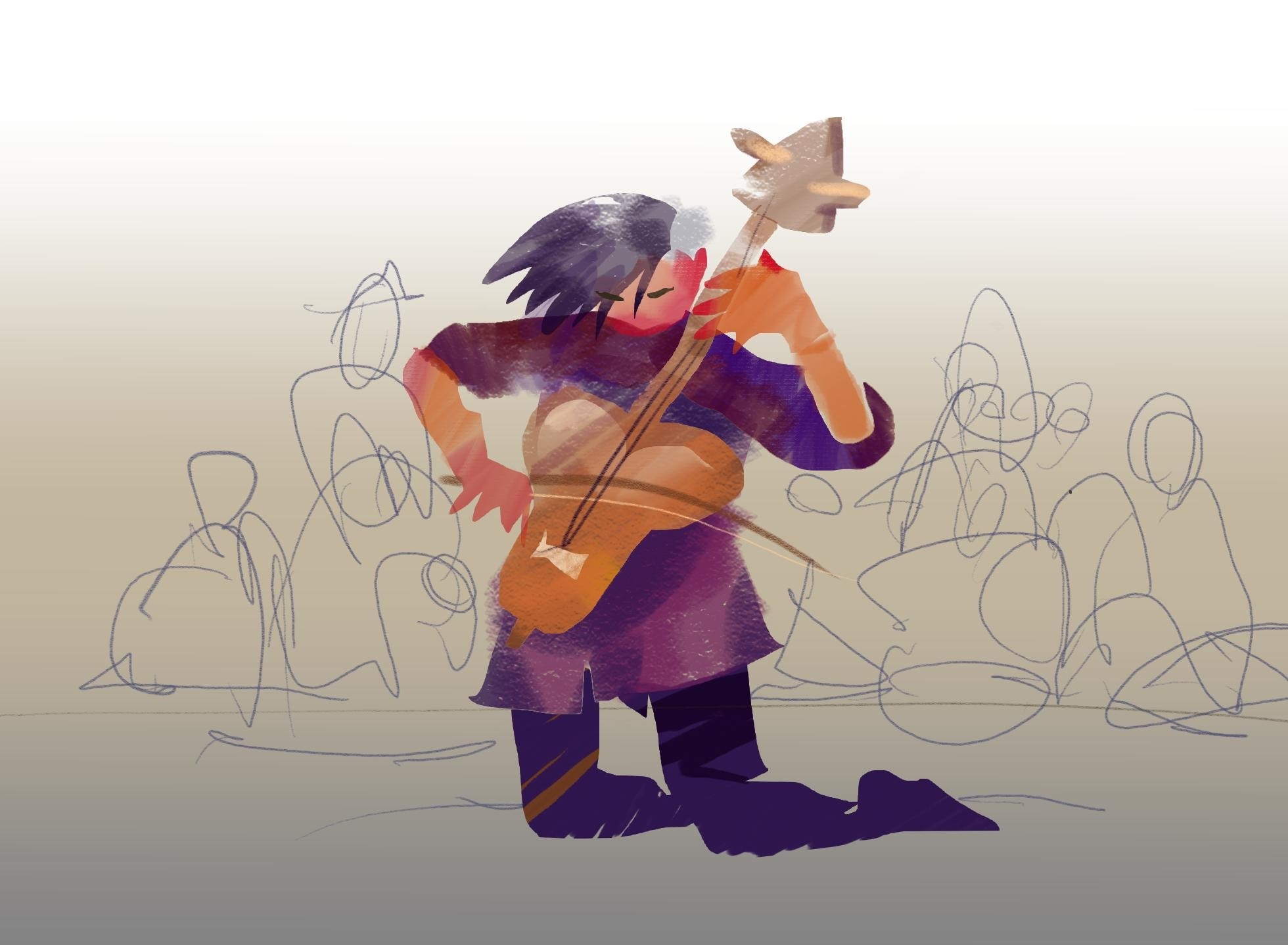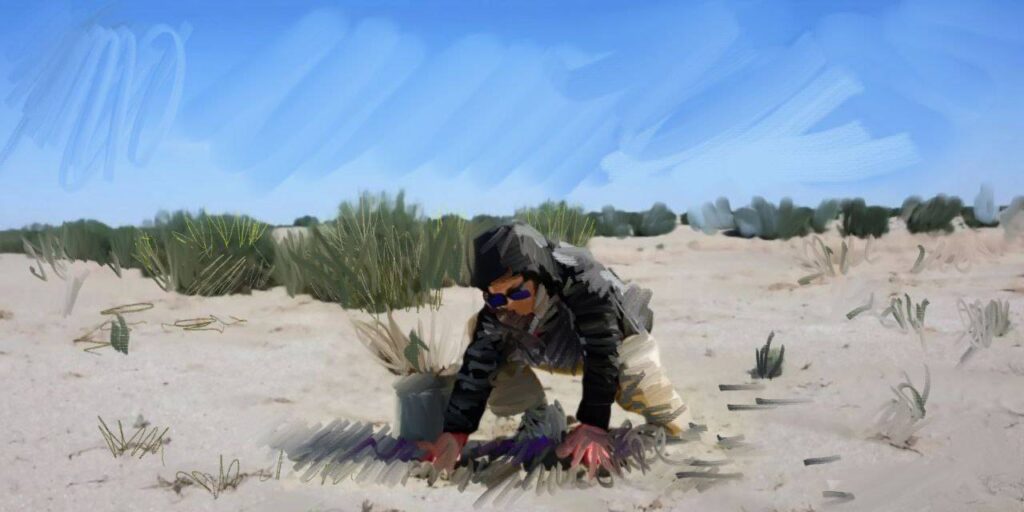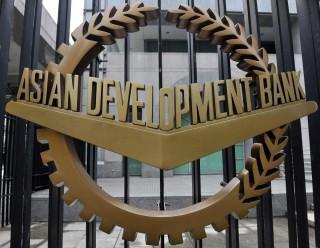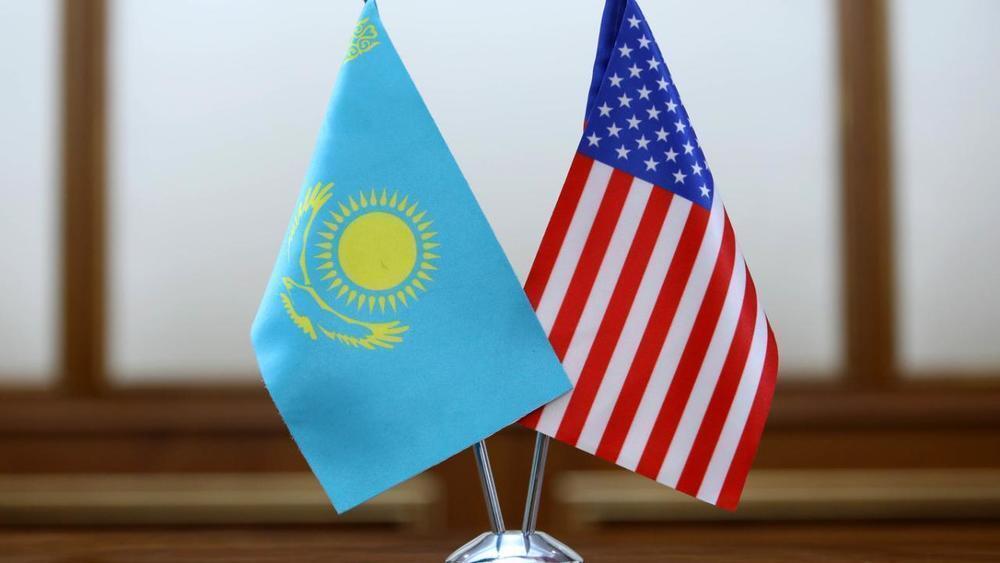The dombra, the kyu, the kobyz, the zhetigen…. The list of traditional instruments in Kazakh music goes on.
These aren’t dust-coated relics. The instruments are increasingly at the forefront of a lot of popular music in Kazakhstan today. They even get makeovers. The dombra is a long-necked, stringed instrument symbolizing Turkic culture. Now there is the electric dombra.
Merey Otan, also known as Mercury Cachalot, knows about all of this. She is a musician and graduate student at Nazarbayev University in Astana and co-author of a book about the transformation of traditional instruments in Kazakhstan.
In written responses to questions from The Times of Central Asia, Otan talked about contemporary Kazakh music and the role of the old instruments. After some replies, TCA includes brief explanations of her musical references.
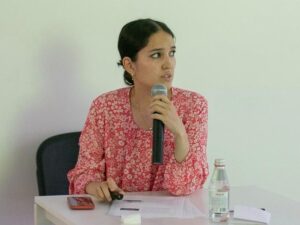
Researcher Merey Otan speaks last year at a launch for a book she co-authored about traditional instruments and contemporary music in Kazakhstan. Otan is a postgraduate student in the Eurasian Studies program at Nazarbayev University in Astana. Photo: Merey Otan
Merey, tell us how you first encountered Kazakh music and what attracted you to Kazakh instruments?
I have always been surrounded by Kazakh music. As long as I can remember we used to sing Kazakh folk songs at family gatherings, and various celebrations. My sister used to play dombra, a Kazakh traditional plucked two-stringed instrument, and when I started going to school I also started learning to play it. Unfortunately, I stopped taking lessons after a couple of years but I still remember how to play some compositions, kuys, and play it once in a while.
TCA: Kuys is a traditional instrumental piece of Kazakh, Nogai, Tatar and Kyrgyz musical cultures. It is performed on various folk instruments.
Which Kazakh instruments are considered the most popular among contemporary musicians, and why do they attract attention?
Dombra is probably the most popular traditional instrument among local musicians, including contemporary ones. It also has a sacred meaning for the people in terms of national identity. This is evident in the quote of a famous Kazakh poet Kadyr Myrza Ali “A true Kazakh is not a Kazakh but a dombra.” This shows that Kazakh people associate their identity with the instrument and incorporating its sound in contemporary songs allows them to situate their music in the local context. Apart from that, musicians also use instuments like qobyz, shanqobyz, zhetigen. Authenticity was always important for musicians and including traditional instruments is one of the popular strategies to demonstrate authenticity for Kazakhstan’s musicians. Among the most popular examples are songs by Yerbolat Kudaibergen, Irina Kairatovna, Aldaspan, The Buhars.
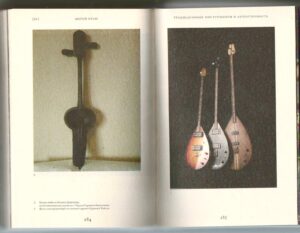
A dombra and a kobyz, traditional instruments used in Kazakhstan, are shown in a book that was co-authored by researcher Merey Otan. Photo: TCA
TCA: The kobyz is an ancient bowed instrument preserved among the peoples of Siberia, Central Asia, the Volga region, Transcaucasia and other regions.
The shankobyz is an ancient Kazakh reed musical instrument, formerly used by shaman-worshipers to imitate the sounds of nature, such as wind, rain, and murmuring water.
The zhetigen is an ancient multi-stringed plucked instrument, often seven-stringed, resembling a psaltery or laid harp, characteristic of Kazakh culture.
Yerbolat Kudaibergenov is a Kazakh singer and author of hit songs such as “Zhigitter” and “Boijetken,” known for compositions filled with love for his homeland and a warlike spirit.
Irina Kairatovna is a creative group from Kazakhstan that produces musical and humorous content. They are the authors of hits such as “Kok Tu,” “China” and “Ne Angime.”
What is the peculiarity of the sound of Kazakh instruments, and what technical and creative approaches do modern musicians use to give them a modern touch?
Kazakh traditional instruments differentiate the sound of local musicians from the vast amount of music in the world. Technological advancements provide opportunities for various creative and unique ways of enriching the sound. For example, musicians include riffs on traditional instrument into songs in hip-hop, R’n’B, rock genres. This makes the sound global and local at the same time. Other musicians went further by creating electric versions of traditional instruments like electric dombyra, electric zhetigen, electric qobyz. These instruments also started gaining popularity among contemporary musicians.
How does the use of Kazakh instruments in contemporary music contribute to the preservation of cultural heritage and broaden its audience?
Definitely, the mentioned musicians play a part in preserving the cultural legacy and widening the audience of the music. First of all, mixing contemporary genres with traditional sounds creates positive associations with the Kazakh instruments for the listener. These instruments are not only thought of as memories of the past but something contemporary, authentic, cool, modern. It surely makes it popular among the youth who get to know these instruments and maybe want to learn to play the riffs from popular songs. It should be mentioned that local musicians are becoming popular in other countries as well. Therefore, we can assume that traditional instruments are becoming known in other regions too. A good example of this is Dimash Kudaibergen who became popular in China due to his incredible voice and now people from all around the world listen to him. However, he also helped popularize dombyra worldwide when he played the instrument on the most prestigious stage like Madison Square Garden in New York.
TCA: Dimash Kudaibergen is a Kazakh singer and multi-instrumentalist who has an international following and includes the use of traditional Kazakh instruments in his performances.
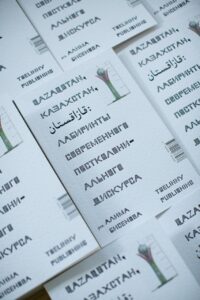
Copies of the book co-authored by Otan lie in a table at a book launch last year. The book is titled “Kazakhstan: Labyrinths of contemporary postcolonial discourse” and is published by the publishing house Tselinniy. Photo: TCA
What challenges do musicians face when integrating Kazakh instruments into contemporary compositions, and how do they overcome them?
The sacred importance of traditional instruments, especially dombra, of course caused some backlash from the conservative part of the population when contemporary musicians included it in their songs or created electric versions of them. This is a common situation not only in Kazakhstan. Back in the day, famous jazz musicians had similar concerns about the creation of electric bass guitar. For instance, ethnic rock band Aldaspan was accused of spoiling dombra by traditional musicians. Nevertheless, these “purist” attitudes did not stop musicians from continuing their work and creating further instruments like electric zhetigen. Moreover, musicians’ audience is increasing and the younger generation is more open to these kinds of creative choices and more liberal in their views. Therefore, I think these musicians no longer face significant struggles.
Can you share examples of successful projects where Kazakh instruments are successfully combined with modern genres of music?
As I mentioned previously, such performers as Yerbolat Kudaibergen with songs “Men qazaqpyn,” “Bizdin Zhigitter” is one of the prominent examples. Pretty much every song of the band Aldaspan and Sharapat and the incredible sound of electric dombyra and electric zhetigen can be considered successful. More popular examples are Irina Kairatovna and their song “Kok tu” where also the outro has riff played on both acoustic dombyra and electric dombyra. The Buhars released a mini album with songs specifically to demonstrate the beauty of traditional Kazakh instruments. Apart from that, OYU is a great platform to find good new music where I found out about the collaboration of DJ Puza and Mira de Leon with the song “Jiber” which also beautifully mixes qobyz sound with electric music.
TCA: OYU is a musical project from Kazakhstan, specializing in live performances of local and foreign artists of various musical genres.
What is your view on the balance between traditional elements of Kazakh music and modern audience requirements?
In my opinion, digital technologies and the vast amount of music from all over the world pushes the audience to find new, unique, interesting sounds and drives musicians to find ways to differentiate them from others. Today, it might be hard to surprise and intrigue a listener, who is constantly exposed to popular music from all over the world. This creates an incredible challenge but at the same time a great foundation for musicians to continue experimenting with the sound, creating new music, making groundbreaking work. And one of the possible strategies is to include traditional Kazakh instruments. This might be a good opportunity not only to gain an audience from the local population but also from other parts of the world.
What advice would you offer to young musicians who want to introduce Kazakh instruments into their creative work?
The most important advice I would give is to not be afraid to make something new. You can’t escape the criticism, especially in the era of social media but this should not stop people from their creative process. Be open to everything, challenge yourself, and challenge the listener.
